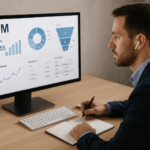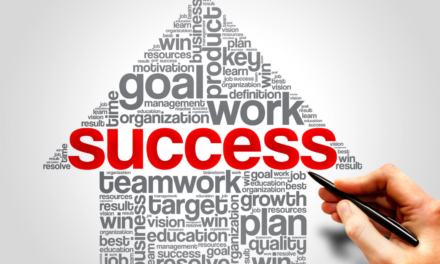
Want More Users? Create More Friction!

Everyone and their dog is obsessed with “removing friction” from the customer journey. It’s the battle cry of efficiency enthusiasts and “SaaS Guru’s” everywhere – reduce clicks, cut steps, automate everything.
But the truth is friction isn’t your enemy. Mindless friction is.
In a rush to streamline, software companies are erasing touchpoints, eliminating human connections, and turning their customer journey into a joyless, monotonous conveyor belt. And what’s the result? Sure, users might buy faster… but are they staying? Are they spending more? Are they turning into evangelists for your product?
If you’re gunning for higher LTV and retention (and you better be), instead of gutting friction, focus on intentional friction! Strategically placed moments that slow the process down just enough to add real value to the customer experience.
Now don’t hear what I’m not saying. I’m all for removing friction from the top of your funnel; that’s exactly what my company accomplishes for our users. And I’m not saying you should create obstacles for the sake of it! I’m talking about the friction that builds connection, trust, and loyalty in a way that accelerates revenue over the long haul.
Why Friction Matters More Than You Think
The obsession with removing friction stems from one big myth: that customers only value speed and simplicity. But humans do not bond with processes… they bond with experiences. Your product is not just a tool – it is part of their story. And stories need memorable moments.
Intentional friction creates opportunities for these moments. It’s the personalized email that makes a user feel understood. It’s the check-in call that helps them realize they are using only 30% of your features (and plants the seed for upsell opportunities). It’s the mid-journey training session that turns a casual user into a raving fan.
Here is the data to back it up: companies that invest in creating meaningful customer experiences see 60% higher profit margins than competitors that don’t (PWC, 2024). More importantly, every added layer of value extends the customer relationship, unlocking LTV growth and reducing churn.
The Anatomy of Intentional Friction
So, how do you sprinkle intentional friction into the customer journey without annoying your users? Think of it like seasoning a dish: too much ruins the experience, but just the right amount elevates everything. Let’s break it down:
1. Onboarding: Start with Connection
Instead of throwing a generic “Welcome to [Product Name]” email at new users, make onboarding personal. Hop on a quick call. Walk them through the features they actually care about, based on the use case they shared during signup. Sure, this takes time, but it is the first step toward turning casual signups into power users.
A personalized onboarding experience has been shown to increase retention rates by up to 20% in the first 90 days. That is friction that pays off.
2. Mid-Journey: Teach, Do Not Just Sell
Once users are past the honeymoon phase, do not ghost them. Reach out with valuable resources, case studies, or training sessions. Don’t upsell (yet); remind them why they chose your product in the first place and how to get the most out of it.
According to a 2024 report by Gainsight, SaaS companies that implement mid-journey educational touchpoints, such as feature deep dives or tailored training sessions, experience a 15% increase in feature adoption rates. Additionally, these companies report upsell conversion rates that are 3x higher compared to those with a purely automated engagement approach. When customers fully understand and leverage the value of your product, they are more likely to expand their usage and deepen their investment.
This positions your product not just as a tool, but as an integral part of their success.
3. Renewal Time: Make It Personal
When it is time to renew, skip the automated emails. Pick up the phone. Remind them of the wins they have had with your product, and be prepared to address concerns head-on. Friction at this stage shows you care, and it is infinitely more effective than crossing your fingers and hoping they click “Renew.”
Companies that implement personalized renewal strategies see 25% higher retention rates, according to Forrester.
Friction That Scales
“But wait,” you are thinking. “Isn’t this the opposite of scaling efficiently?” Nope. This is where automation and human touch come together like peanut butter & jelly. The key is to create processes that identify the high-value moments where friction adds the most impact, then decide which to automate and which require a human touch.
For example:
- Automate the emails that remind users of underutilized features, but ensure a customer success manager is available for a live walkthrough.
- Use AI to segment customers who are at risk of churn, but deliver a tailored outreach message that feels personal.
You are not scaling mindless efficiency; you are scaling meaningful connection.
How Intentional Friction Boosts LTV and Retention
At its core, intentional friction does two things that directly impact your bottom line:
- It turns users into believers. When customers feel understood and supported, they are more likely to stick around and to pay for premium features, upsells, or adjacent products.
- It turns customers into advocates. Happy customers do not just stay; they bring their friends. And the lifetime value of a referred customer is 16% higher than a non-referred one (HubSpot).
The result? Higher LTV, lower churn, and a community of customers who do not just tolerate your product – they love it.
The Challenge: Be Brave Enough to Slow Down
The reason so many companies shy away from friction is simple: it is scary. Slowing down feels counterintuitive when speed is king. But the boldest companies, those that thrive for decades, not just quarters, know that loyalty is not built overnight. It is built touchpoint by touchpoint, through thoughtful interactions that show customers you are in it for the long haul.
So, C-Suite readers, here is my challenge to you: do not settle for a frictionless journey. Create one that matters. The payoff will be worth it.
After all, anyone can sell a product. You are here to build a legacy. And legacy is never frictionless – it is intentional
































